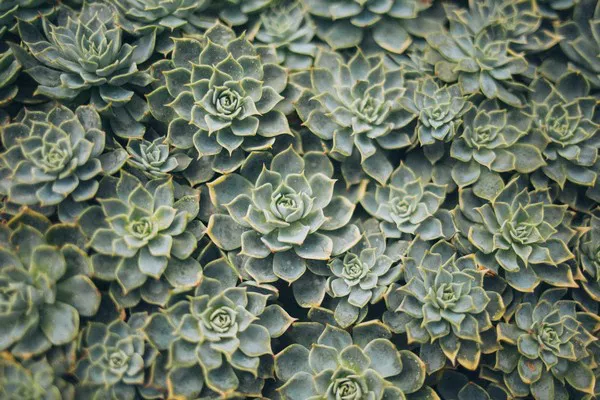Succulents, with their diverse shapes and striking colors, have become increasingly popular as ornamental plants in homes, gardens, and offices. Known for their ability to store water in their leaves, stems, and roots, succulents are well-adapted to arid environments, making them low-maintenance and resilient choices for plant enthusiasts. However, it is essential to understand where succulents originate and naturally grow to provide them with the best possible care and replicate their native habitats successfully. In this article, we delve into the geographical distribution of succulents, their diverse habitats, and the factors that influence their growth and survival.
1. Geographical Distribution of Succulents
Succulents are a diverse group of plants that are distributed across various continents. The primary regions where succulents naturally grow include:
Africa
Africa is a hotspot for succulent diversity, particularly in the arid and semi-arid regions of Southern Africa. Countries such as South Africa, Namibia, Botswana, and Zimbabwe boast a high number of succulent species. The vast and varied landscapes in this region, ranging from deserts to rocky outcrops, provide ideal conditions for succulents to flourish.
Americas
North, Central, and South America are home to several succulent species. In North America, states like Arizona, Texas, and California host a wide range of cacti, which are a type of succulent adapted to desert environments. Central America, particularly Mexico, also boasts an impressive variety of succulents, including Agave and Echeveria species. Moving south, arid regions in countries like Peru and Chile are home to unique succulent species.
Madagascar
Madagascar, the fourth-largest island in the world, is a biodiversity hotspot for unique plant species, including succulents. The spiny forests of Madagascar host numerous succulent varieties, such as the iconic Baobab trees and various Aloes.
Middle East
Countries in the Middle East, such as Saudi Arabia and Yemen, feature succulents that are well-adapted to the hot and dry conditions of deserts and rocky terrains.
Australia
Australia is home to distinctive succulent species, particularly in the arid regions of Western Australia. Plants like the Kangaroo Paw (Anigozanthos) and Pigface (Carpobrotus) are examples of succulents found in this region.
2. Diverse Habitats of Succulents
Succulents have evolved to thrive in a variety of habitats, allowing them to withstand extreme conditions and adapt to diverse climates. Some common habitats where succulents naturally grow are as follows:
Deserts
Perhaps the most famous habitat for succulents is deserts. These arid regions pose significant challenges for plant life due to their limited water availability and extreme temperatures. Succulents have evolved specialized water storage tissues, such as fleshy leaves and stems, to survive in these harsh environments. Cacti, Agaves, and Euphorbias are common succulents found in desert regions worldwide.
Rocky Outcrops
Succulents often thrive on rocky slopes and outcrops, where their roots can anchor into crevices, and water runoff provides occasional moisture. These habitats are common in mountainous regions and contribute to the beauty of alpine landscapes. Sedum, Sempervivum, and Delosperma are examples of succulents that flourish in rocky environments.
Coastal Regions
Coastal succulents are adapted to withstand strong winds, salt spray, and sandy soils. These plants play a crucial role in stabilizing sand dunes and preventing coastal erosion. Coastal succulents like Sea Fig (Carpobrotus) and Ice Plant (Mesembryanthemum) can be found in various coastal areas worldwide.
Tropical Climates
Contrary to the misconception that all succulents thrive in arid environments, some succulents naturally grow in tropical climates with regular rainfall. In these regions, succulents have developed unique adaptations to store water during the wet season and endure drier periods. For example, some members of the genus Kalanchoe are found in tropical regions of Africa and Asia.
3. Factors Affecting Succulent Growth and Distribution
Several factors influence the growth, distribution, and abundance of succulents in their natural habitats. Understanding these factors can help us create suitable environments for succulents in cultivation:
Climate
Climate plays a significant role in determining where succulents can thrive. While some succulents are adapted to hot and dry desert climates, others prefer milder temperatures with occasional rainfall. Temperature, humidity, and precipitation patterns all influence the distribution of succulents across different regions.
Soil Composition
Succulents typically prefer well-draining soil, as waterlogged roots can lead to rot and other health issues. In their natural habitats, succulents often grow in sandy or rocky soils that allow excess water to drain away quickly. The soil’s nutrient content also affects the growth and overall health of these plants.
Sunlight Exposure
Succulents are sun-loving plants and generally require ample sunlight to thrive. The amount of sunlight they receive in their natural habitats can significantly impact their growth and shape. For instance, some succulents may have compact, tight rosettes in sunny locations to reduce water loss through evaporation.
Water Availability
Water availability is a critical factor influencing the distribution of succulents. In desert regions, succulents have adapted to store water during periods of rainfall or high humidity and conserve it during dry spells. Some succulents have shallow root systems to capture even the slightest moisture from the air or dew.
Human Impact
Human activities, such as deforestation, urbanization, and illegal plant harvesting, can disrupt succulent habitats and threaten their survival. Conservation efforts are essential to protect the diverse array of succulent species and their natural habitats.
Conclusion
Succulents are remarkable plants that have adapted to thrive in various challenging environments around the world. From the deserts of Africa and the Americas to the rocky slopes and coastal regions, succulents have evolved diverse strategies to store water and survive in arid conditions. Understanding where succulents naturally grow and the factors that influence their growth and distribution is crucial for their successful cultivation and conservation. By providing suitable environments that mimic their native habitats, we can continue to appreciate and enjoy the beauty of these resilient and captivating plants.


